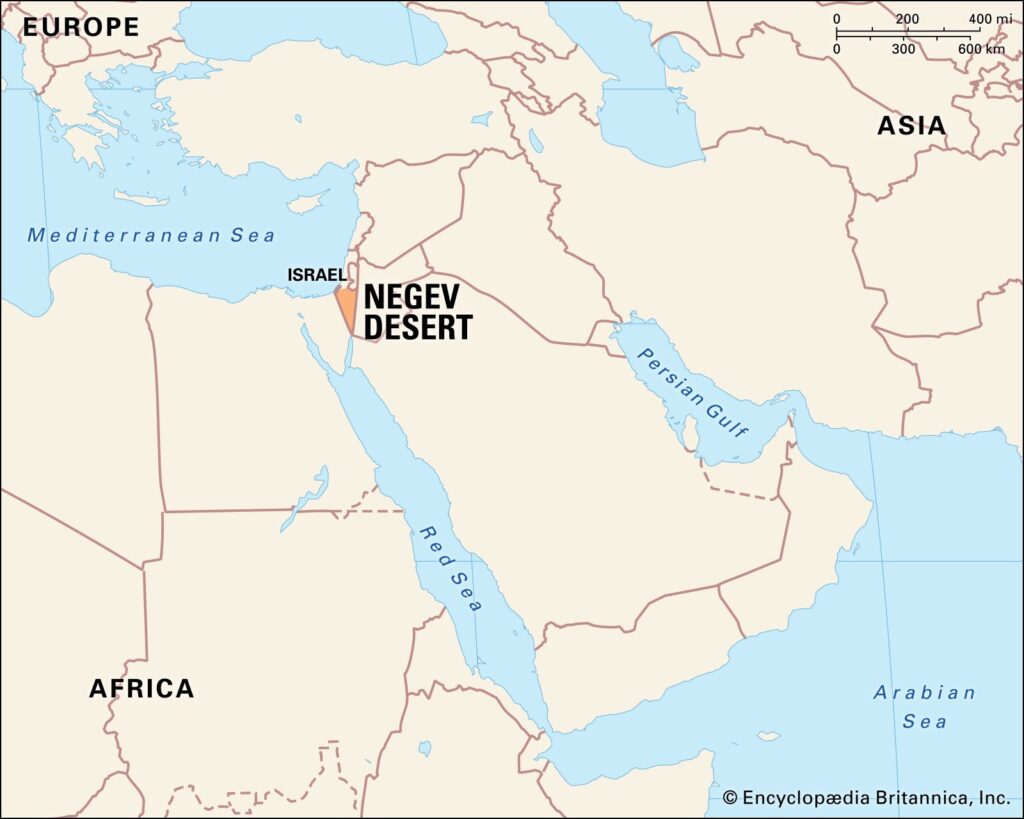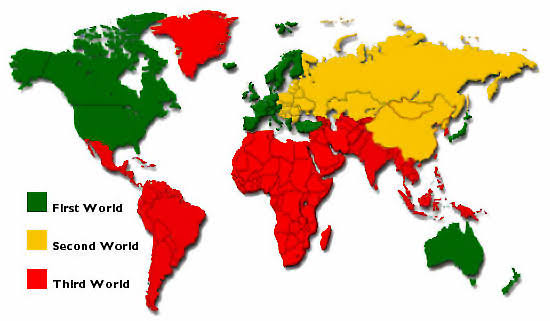In the 1960s, the United States considered an audacious plan to construct an alternative to the Suez Canal through Israel’s Negev Desert, using 520 nuclear bombs to excavate a 160-mile waterway. This proposal, part of Project Plowshare, was detailed in a 1963 declassified memorandum from the Lawrence Livermore National Laboratory, revealing a Cold War-era mindset that prioritized strategic and economic gains over environmental, political, and human costs. While the plan never came to fruition, it exemplifies a broader pattern of double standards in which First World nations pursued ambitious development projects, often at the expense of Third World regions, exposing the latter to disproportionate risks and consequences. This article explores the Negev Canal proposal, critiques the double standards embedded in such initiatives, and draws parallels with other historical examples where First World development ambitions burdened Third World countries with severe costs.

The Negev Canal Proposal: A Nuclear Dream
The 1963 memorandum, declassified in 1996, outlined a plan to create a sea-level canal connecting the Mediterranean Sea to the Gulf of Aqaba, providing access to the Red Sea and Indian Ocean. The document, produced by the U.S. Department of Energy-backed Lawrence Livermore National Laboratory, estimated that conventional excavation methods were “prohibitively expensive” and proposed using 520 two-megaton nuclear bombs—equivalent to 1.04 gigatons of explosives—to carve out the 160-mile canal. The memo noted that 130 miles of the route traversed “virtually unpopulated desert wasteland,” suggesting nuclear excavation was feasible, and claimed the canal would be a “strategically valuable alternative to the present Suez Canal” while contributing to economic development.
The proposal emerged in the context of the Suez Crisis of 1956, when Egyptian President Gamal Nasser nationalized the canal, threatening Israel’s access to this vital trade route. The U.S., seeking to secure alternative pathways and demonstrate the “peaceful” applications of nuclear technology under Project Plowshare, saw the Negev Desert as a testing ground. However, the memorandum acknowledged a critical flaw: “political feasibility,” as Arab nations surrounding Israel would likely object to the project. This concern was understated, given the potential for regional destabilization and the environmental havoc nuclear explosions would unleash.
The plan’s abandonment was driven by practical and ethical concerns. Tests conducted under Project Plowshare revealed that nuclear explosions caused significant radioactive contamination, rendering landscapes uninhabitable. By 1977, funding for such “peaceful” nuclear projects had dried up, and the Atomic Energy Commission was disbanded in 1974. Yet, the proposal’s very conception reflects a reckless ambition characteristic of First World nations, willing to experiment with catastrophic technologies in geopolitically sensitive regions, often inhabited by less powerful nations or marginalized populations.
Double Standards in Global Development
The Negev Canal proposal highlights a persistent double standard in global development: First World nations have historically pursued projects to bolster their strategic and economic dominance, often externalizing the costs—environmental, social, and political—to Third World countries. The willingness to consider nuclear explosions in Israel’s Negev Desert, a region surrounded by developing nations, underscores a disregard for the long-term consequences on local populations and ecosystems, prioritizing Western interests over regional stability.
This double standard is rooted in a colonial legacy where First World powers exploited Third World resources, labor, and land for their benefit. The Negev proposal assumed the desert was “unpopulated,” ignoring the Bedouin communities and the broader geopolitical ramifications for Arab nations. The memorandum’s failure to address the human and environmental toll—radioactive fallout, displacement, and regional tensions—reveals a mindset that viewed Third World regions as expendable testing grounds for First World innovation.
Historical Parallels: Third World Costs for First World Gains
The Negev Canal proposal is not an isolated case. Several historical examples illustrate how First World development projects imposed disproportionate burdens on Third World countries:

1. Nuclear Testing in the Pacific (1946–1962): The United States conducted over 100 nuclear tests in the Marshall Islands, a U.S.-administered trust territory, under operations like Crossroads and Castle. The Bikini and Enewetak Atolls were devastated, with local populations displaced and exposed to radioactive fallout. The 1954 Castle Bravo test, a 15-megaton explosion, caused widespread contamination, leading to long-term health issues like cancer and birth defects among Marshallese communities. The U.S. prioritized its nuclear arsenal development while treating the Pacific Islands as a laboratory, with little regard for the indigenous population’s welfare.
2. The Panama Canal Expansion Proposal (1960s): Similar to the Negev plan, Project Plowshare explored using nuclear explosions to widen the Panama Canal or create a new canal through Central America, with proposed routes in Panama, Nicaragua, and Colombia. The U.S. Army Corps of Engineers estimated a $2 billion cost for the Pan-Atomic Canal, but concerns about radiation and environmental damage to indigenous lands led to its cancellation in 1969. The proposal ignored the ecological and social impacts on Central American nations, treating them as mere backdrops for U.S. infrastructure ambitions.
3. The Bhopal Gas Tragedy (1984): While not a nuclear project, the Bhopal disaster in India exemplifies how First World corporations externalized risks to Third World nations. Union Carbide, a U.S.-based company, operated a pesticide plant in Bhopal with lax safety standards, leading to a gas leak that killed thousands and injured over half a million people. The disaster highlighted how multinational corporations exploited weaker regulations in developing countries, reaping profits while exposing local populations to catastrophic risks.
4. African Uranium Mining for Western Nuclear Programs (1950s–1980s): The nuclear ambitions of First World nations, including the U.S. and France, relied heavily on uranium mined in African countries like Niger, Namibia, and the Democratic Republic of Congo. These operations, often controlled by Western companies, caused environmental degradation and health hazards for local workers, with minimal economic benefits returned to the host countries. The exploitation of African resources fueled First World nuclear programs while leaving Third World communities to bear the environmental and social costs.
Critiquing the Double Standards
The Negev Canal proposal and its parallels reveal a pattern of double standards where First World nations pursued technological and strategic advancements at the expense of Third World regions. These projects often ignored the sovereignty, environmental integrity, and human rights of less powerful nations. The assumption that “unpopulated” or geopolitically marginal areas were suitable for such experiments reflects a colonial mindset, treating Third World landscapes as disposable.
Moreover, the Negev proposal’s reliance on nuclear technology under Project Plowshare underscores a broader hypocrisy in nonproliferation policies. While the U.S. sought to limit nuclear weapons development in other nations, it simultaneously explored nuclear explosions for its own strategic projects, even in sensitive regions like the Middle East. Declassified documents from the period also reveal U.S. concerns about Israel’s Dimona nuclear reactor, suspected of weapons development, yet the U.S. was willing to consider nuclear explosions in the same region for its canal project, highlighting a selective application of nuclear ethics.
The environmental and human costs of these projects were often downplayed or ignored. The Negev plan’s memorandum barely addressed the radioactive fallout that would have rendered vast areas uninhabitable, a lesson learned from Project Plowshare’s 27 experimental explosions, which heavily irradiated test sites. Similarly, the Marshall Islands tests and African uranium mining prioritized First World strategic needs over the health and livelihoods of local populations.
Conclusion: A Call for Accountability
The Negev Canal proposal, though never implemented, serves as a stark reminder of the double standards that have shaped global development. First World nations, driven by strategic and economic ambitions, have repeatedly imposed disproportionate costs on Third World countries, from environmental devastation to geopolitical instability. The declassified 1963 memorandum exposes not only the audacity of the nuclear canal plan but also the broader mindset that viewed Third World regions as expendable for First World progress.
To address these inequities, global development must prioritize accountability and equity. First World nations and corporations should be held responsible for the environmental and social impacts of their projects, with mechanisms to ensure affected communities receive restitution and support. The lessons from the Negev proposal, Marshall Islands, Bhopal, and African uranium mining underscore the need for a development model that respects the sovereignty and well-being of all nations, not just those with power.



